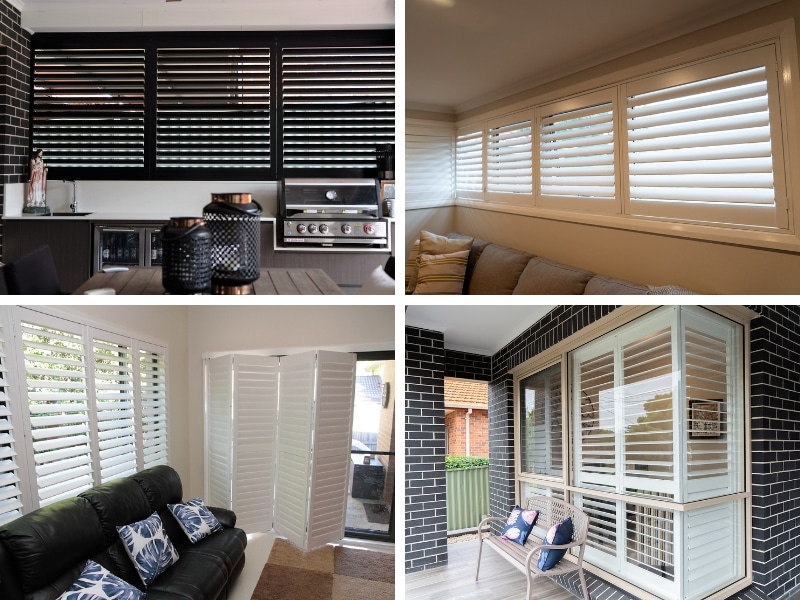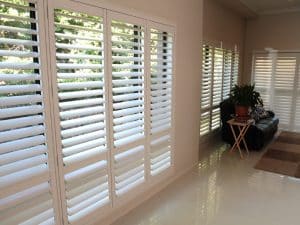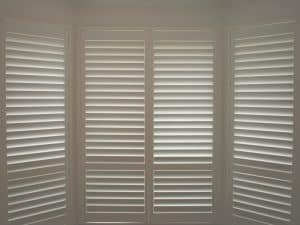Indoor plantation shutters offer more than a polished look — they shape your home’s comfort, privacy, and energy use. However, with several varieties on the market, sorting through the different types of plantation shutters can quickly become overwhelming. Material, function, and fit all play a role in whether your shutters perform or flop.
Choosing the wrong type can result in poor durability, a mismatched design, or unnecessary energy loss. These problems aren’t always obvious at first — they creep up slowly until repairs or replacements are needed. Understanding the strengths and weaknesses of each type gives you the confidence to choose once and choose well. This guide breaks down the differences so you can pick shutters that look good and work hard, no matter the room they’re in.
What materials define the different types of plantation shutters?
Material is where the real differences begin. Not all shutters are built the same — some thrive in heat, others in humidity, and a few simply win on looks.
- Basswood shutters bring warmth and are easy to stain or paint. They’re lightweight, making installation simpler, and hold shape well over time. But they don’t love moisture and need more upkeep in humid areas.
- PVC shutters handle water well and don’t warp in steamy spots. They’re ideal for high-humidity rooms and offer a clean, smooth finish that suits most modern interiors. However, they can look less premium up close.
- Aluminium shutters are strong, sleek, and ideal for high-use areas. They resist dents and damage, making them a good fit for homes with kids or pets. They can feel cooler to the touch and look more industrial, which isn’t always a style match.
- Composite shutters suit tight budgets, but don’t love wet rooms. They mimic wood but can swell over time in bathrooms. Still, they’re popular for guest rooms or low-moisture zones thanks to their affordability and customisation options.
A common mistake is prioritising style over function. That often leads to warping, swelling, or early wear. Instead, you’ll find that choosing different shutter materials based on specific room conditions saves both time and money in the long run.
How do different types of plantation shutters affect home design?
Shutters frame your windows — and influence your interior flow. From louvre size to frame colour, they do more than block light.
- Larger louvres give a bold, modern look. They open up the space visually, allowing more light in and reducing visual clutter. Great for open-plan areas or where you want that luxe, minimalist feel.
- Slimmer slats lean toward a more traditional or colonial style. They suit character homes or rooms with ornate mouldings, helping tie old and new elements together.
- White finishes keep spaces bright, while darker tones add contrast. A sharp black or charcoal shutter can anchor a space, acting almost like furniture in the design plan.
- Framed shutters offer structure, and unframed ones feel more relaxed. Frames help with light control and sealing, which is especially important in bedrooms or nurseries. Frameless styles keep the vibe casual.
Installing the wrong design can make a space feel off-balance or disconnected. If you’re after cohesion across multiple rooms, think of colour and shape as a visual thread. When it comes to tailoring fixtures to match your interior theme, it’s those small styling choices that tie everything together.
Are there types of plantation shutters suited for wet areas?
Absolutely. Kitchens, bathrooms, and laundries need shutters that can hold their own in moisture-prone zones.
- PVC shutters are waterproof, won’t swell, and are easy to clean. They’re often used in coastal homes where sea air adds to the moisture load. Cleaning takes just a damp cloth — no special products are needed.
- Aluminium shutters resist corrosion and are suitable for indoor-outdoor transitions. They’re a strong pick for laundry rooms or pool-facing windows, where splashing is inevitable. They also offer a modern, industrial finish.
- Avoid timber or MDF in damp spaces — they’re prone to warping. Even with sealing, moisture eventually gets in, leading to peeling paint or swollen frames.
Many homeowners don’t realise their stylish timber shutters aren’t made for bathrooms — until it’s too late. Exploring the full range of modern types of plantation shutters helps dodge costly replacements and keeps rooms looking sharp longer.
Which options offer the best insulation performance?
Shutters don’t just control sunlight — they affect your heating and cooling bills, too.
- Timber shutters insulate naturally, thanks to their solid structure. They also block out more external noise, making them ideal for homes near busy streets. Their density helps in both summer and winter.
- PVC units offer moderate thermal protection and hold up well across seasons. While not as dense as timber, their tight seal helps reduce drafts.
- Aluminium options help reflect heat but can transmit cold. They suit Queensland homes that prioritise heat control but might not be ideal for cooler climates.
- Tight-fitting frames reduce airflow leakage and boost performance. Lack of fit is one of the top reasons shutters underperform, especially in older homes with uneven walls.
- Poor insulation can quietly sap energy and comfort, especially in homes with large glass areas. The right shutters block heat in summer and trap warmth in winter. If you’re mapping out thermal comfort strategies for homes, start by assessing where your heat loss (or gain) occurs most, then match the shutter material accordingly.
How can you effectively compare the different types of plantation shutters?
Comparing shutters means matching features to your home’s needs, not just going with what’s trendy.
| Feature | Timber | PVC | Aluminium | Composite |
| Moisture Resistance | Low | High | High | Low |
| Insulation | Excellent | Good | Moderate | Fair |
| Appearance | Natural look | Sleek, plain | Minimalist | Painted wood |
| Price Range | Higher | Mid-range | Higher | Budget |
| Upkeep Level | Moderate | Low | Low | Moderate |
- Timber offers excellent insulation and a rich appearance, but at a higher cost and with more upkeep.
- PVC balances performance and affordability, making it a solid all-rounder, especially for busy homes.
- Aluminium provides durability and weather resistance, which is great for active households or semi-outdoor use.
- Composite is your go-to for short-term solutions, but don’t expect long-lasting performance in high-demand zones.
A one-size-fits-all mindset rarely works here. Factor in the climate, room use, and your design vision. The more specific your needs, the easier it is to filter the noise.
Can multiple shutter styles work together in one home?
Yes — in fact, mixing styles is often the smartest move. Just make sure the transitions feel natural.
- Use tier-on-tier shutters in lounge areas for day-to-night control. They give you light flexibility and privacy at once, which is especially useful for street-facing rooms.
- Choose PVC for bathrooms or wet spaces. These keep the look consistent while preventing damage in tricky zones.
- Stick with a consistent louvre width throughout the home. Mixing widths can look disjointed and rushed, even if materials differ.
- Match your finishes or colours to keep things cohesive. Colour uniformity goes a long way toward blending multiple styles without visual conflict.
Too much variety can feel disjointed, but thoughtful mixing gives you the best of both worlds — form and function. Homes with tricky layouts or inconsistent lighting often benefit most.
Best Indoor Plantation Shutter Types
Navigating the different types of plantation shutters doesn’t have to be a guessing game. With the right mix of style, purpose, and material knowledge, you can land on shutters that serve your home well, in every room.
Whether you’re aiming for durability, insulation, or a standout finish, the key lies in matching the shutter to the space. Don’t default to the most popular pick — let the room, light, and usage guide your choice.
To fine-tune your selection or explore fitting details, you can always get tailored advice from iStyle Shutters.




